This is one in a series of posts on the Sony alpha 7 R Mark IV (aka a7RIV). You should be able to find all the posts about that camera in the Category List on the right sidebar, below the Articles widget. There’s a drop-down menu there that you can use to get to all the posts in this series; just look for “A7RIV”.
Today, I was surprised to read the following:
The Sony A7RIV drops the bit depth to 12 bits for electronic shutter (“silent shutter”) past a certain time threshold. [EFCS] should be turned on for such exposures.
If true, this was certainly news to me, but I hadn’t done a full shutter speed series on the a7RIV using the electronic shutter. I ran a dark-field test with no lens installed, at ISO 1000, with the file format set to uncompressed.
That looks like the EFCS EDR curve set to me. Roughly the same values. Same jump where the “star-eater” algorithm kicks in.
I looked at the histogram of a 30-second exposure:
All 14 bits are present and accounted for.
I looked at a 30-second dar-field exposure with the file format set to compressed, and the camera in single-shot mode:
Al 13 bits are there.
Looks like this was a false alarm. Maybe the photographer had the camera in continuous mode and the file format set to compressed.
If LENR compression is switched on, precision drops to 12 bits:
Above, compressed, LENR on.
Above, compressed, LENR off. Note that, with a 2.5 second exposure, LENR makes the noise worse, not better.
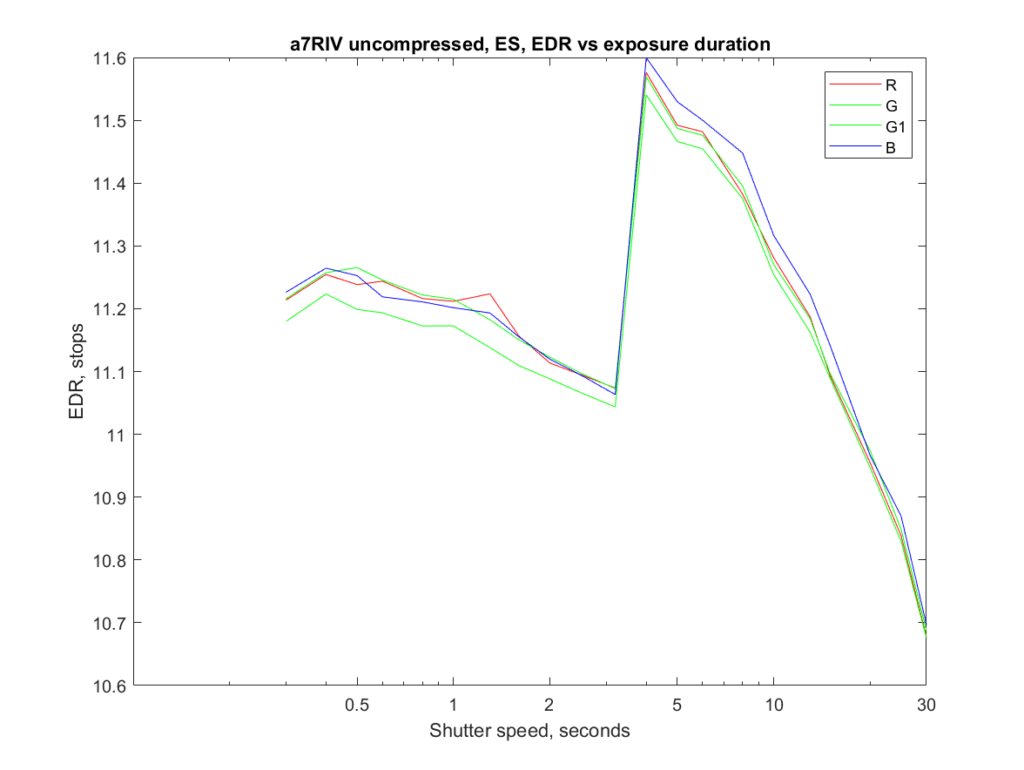
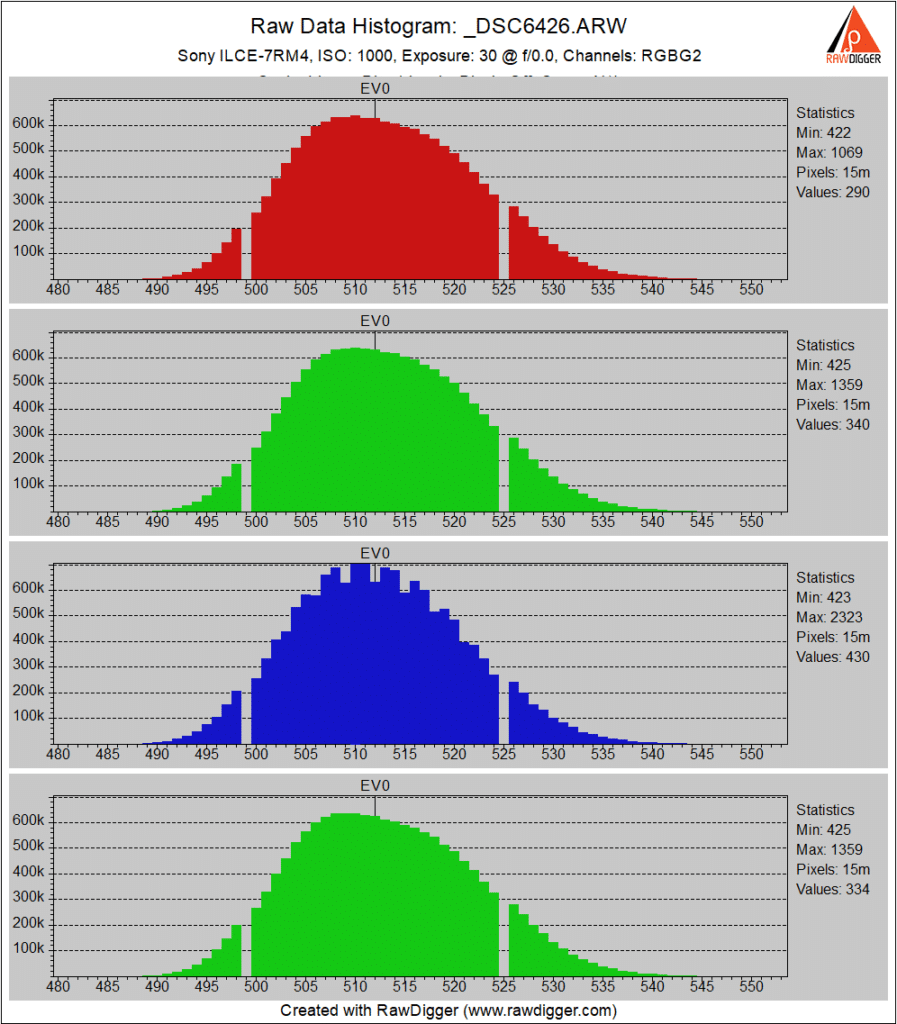
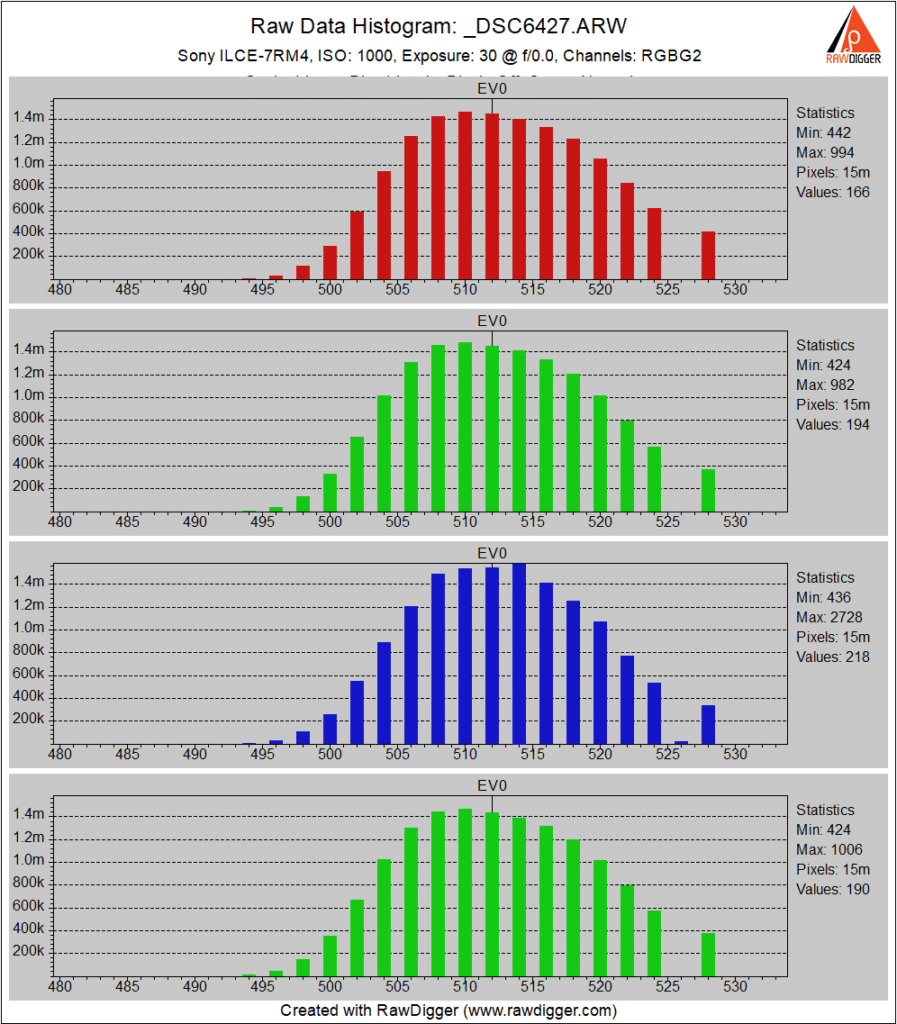
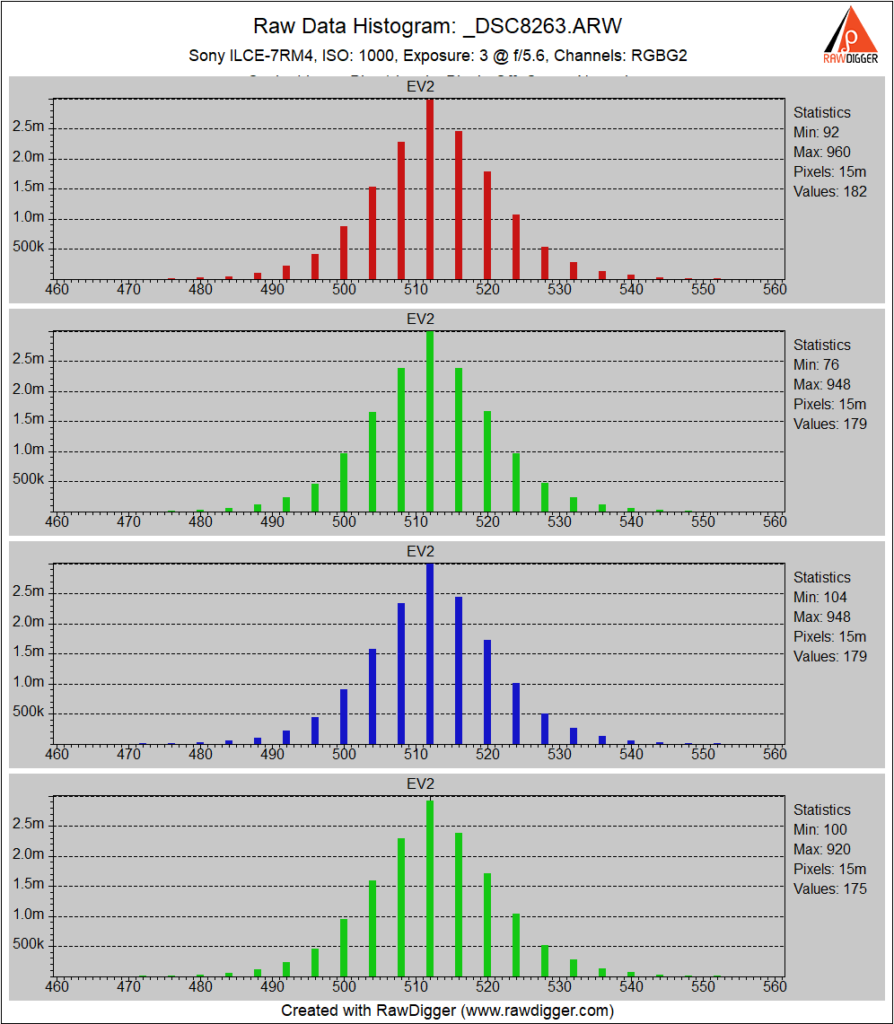
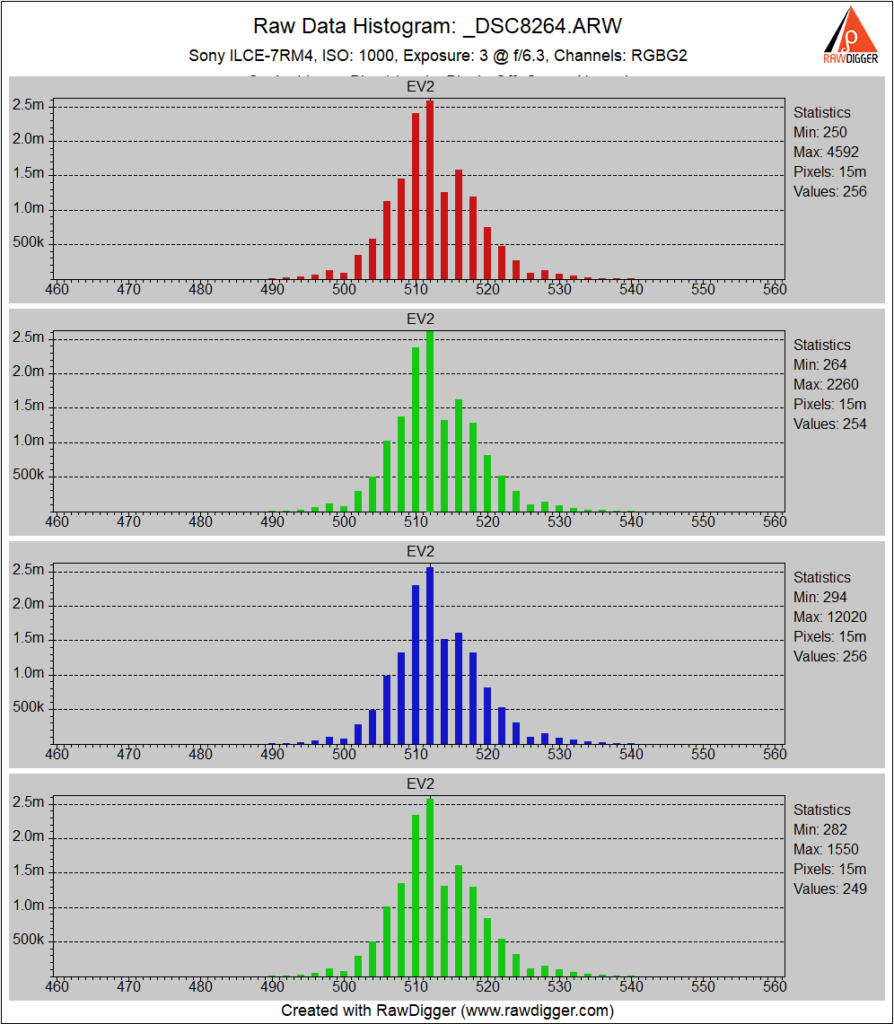
Hi Kasson, I’m wonder how to analysis 14/13/12bit from histogram graph.
If you don’t mind, can you tell me how to find 14/13/12 bit from that graph?
It’s my curiosity.
For 14-bit precision, all the “buckets” in the histogram will be populated to some degree. For 13-bit precision, every other bucket will be empty. For 12-bit precision, only every fourth bucket will a non-zero count..
Thanks for your answer! I have one more question.
I wonder the difference between 16 bits and 14 bits of histogram graph. 14 bits already show full of histogram. What shape is 16 bits?
The histogram buckets are arranged according to the precision advertised in the EXIF. If the advertised precision is 16 bits, and the actual precision is 14 bits with no trickery, then every fourth bucket will be occupied.
Is there any effect on bit precision if long-exposure noise reduction is switched on?
Yes. Precision drops to 12 bits.